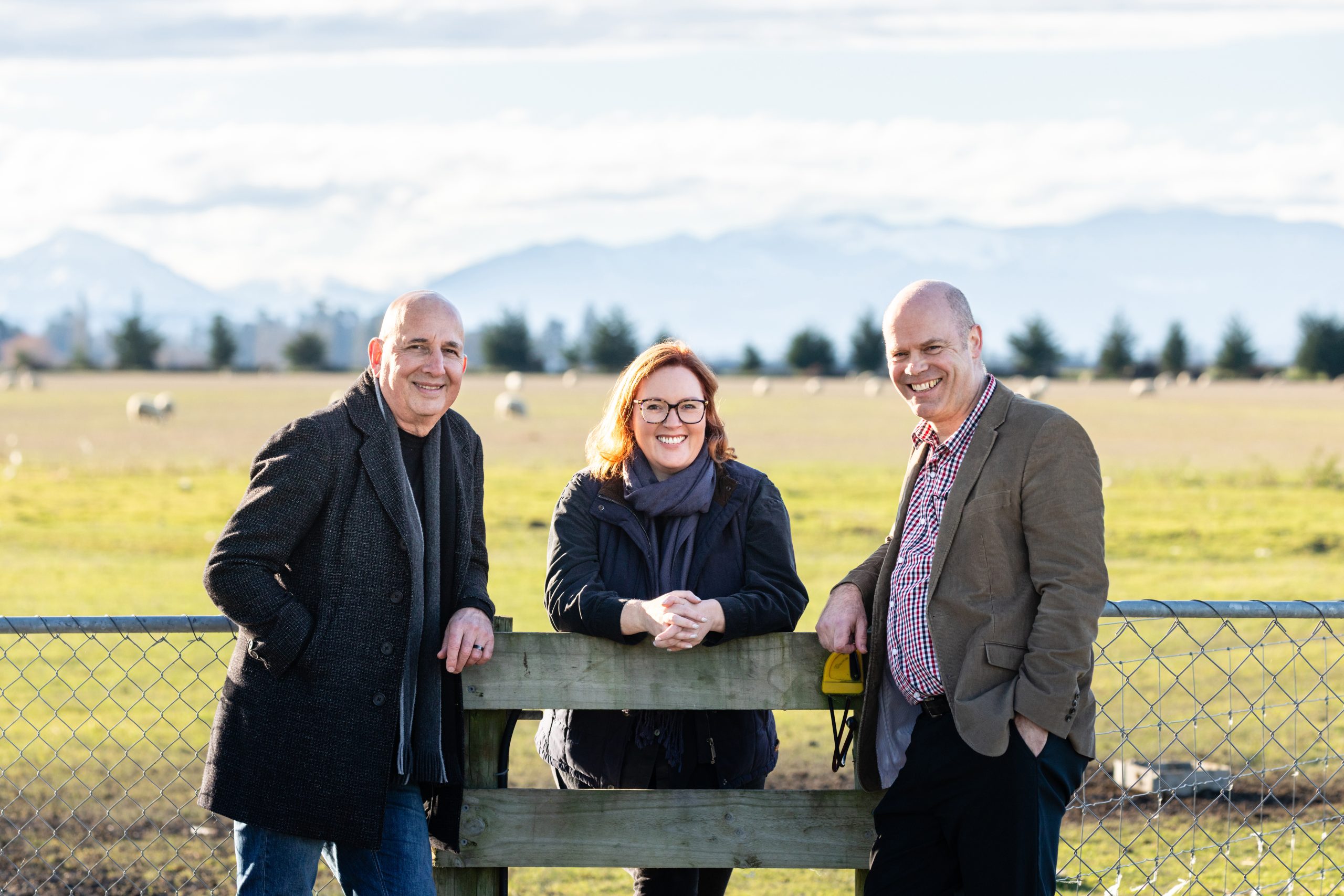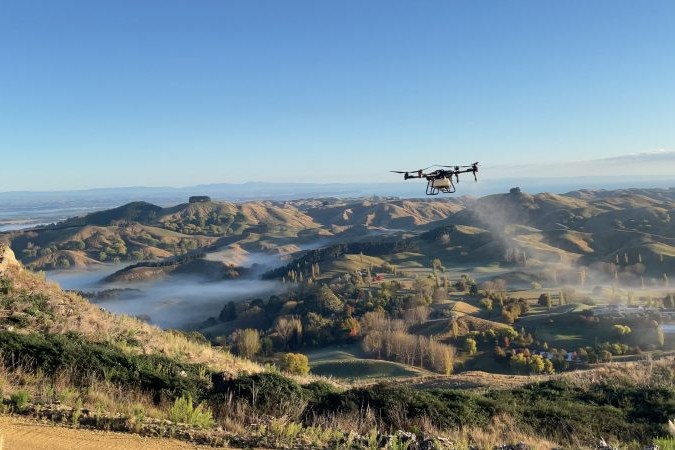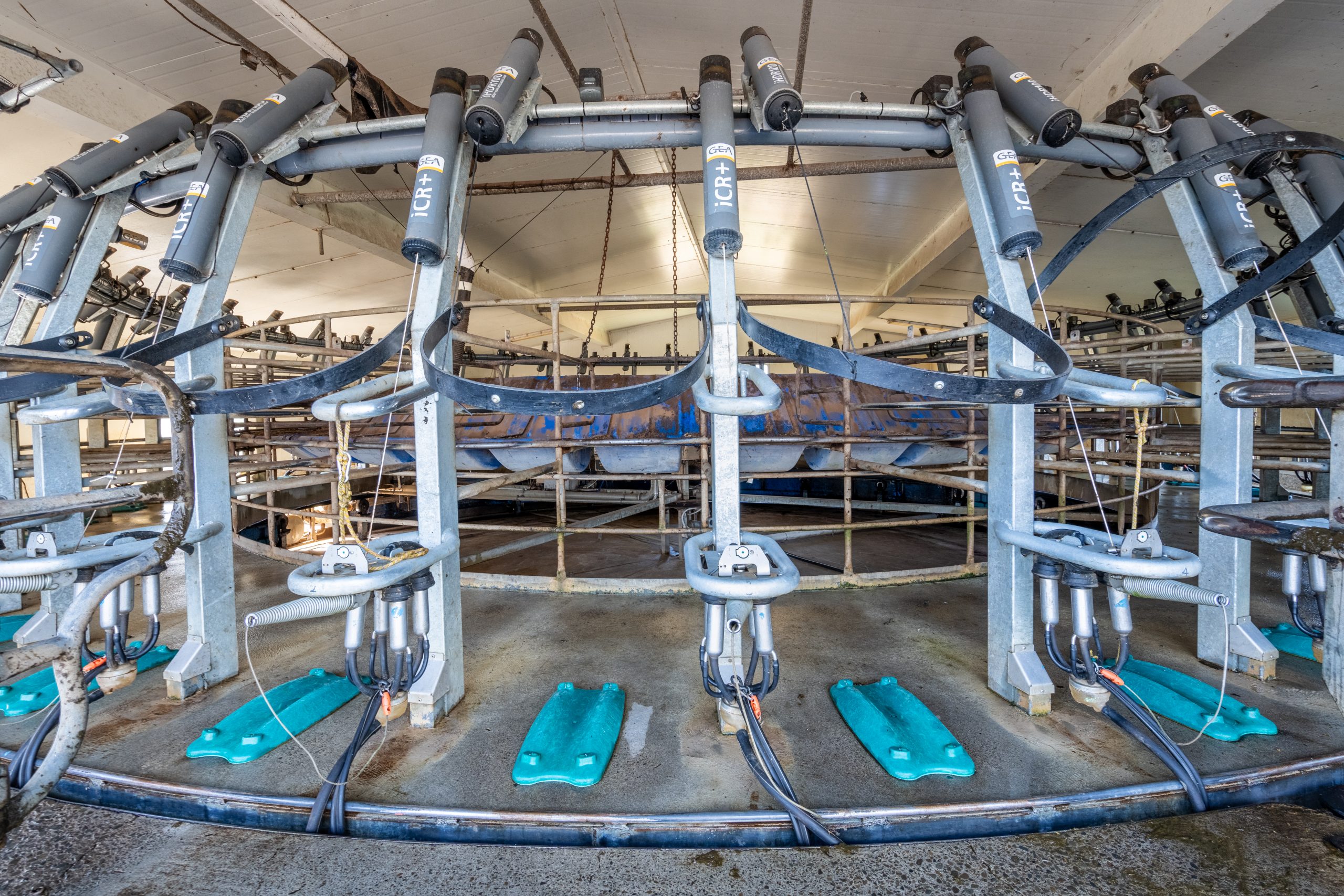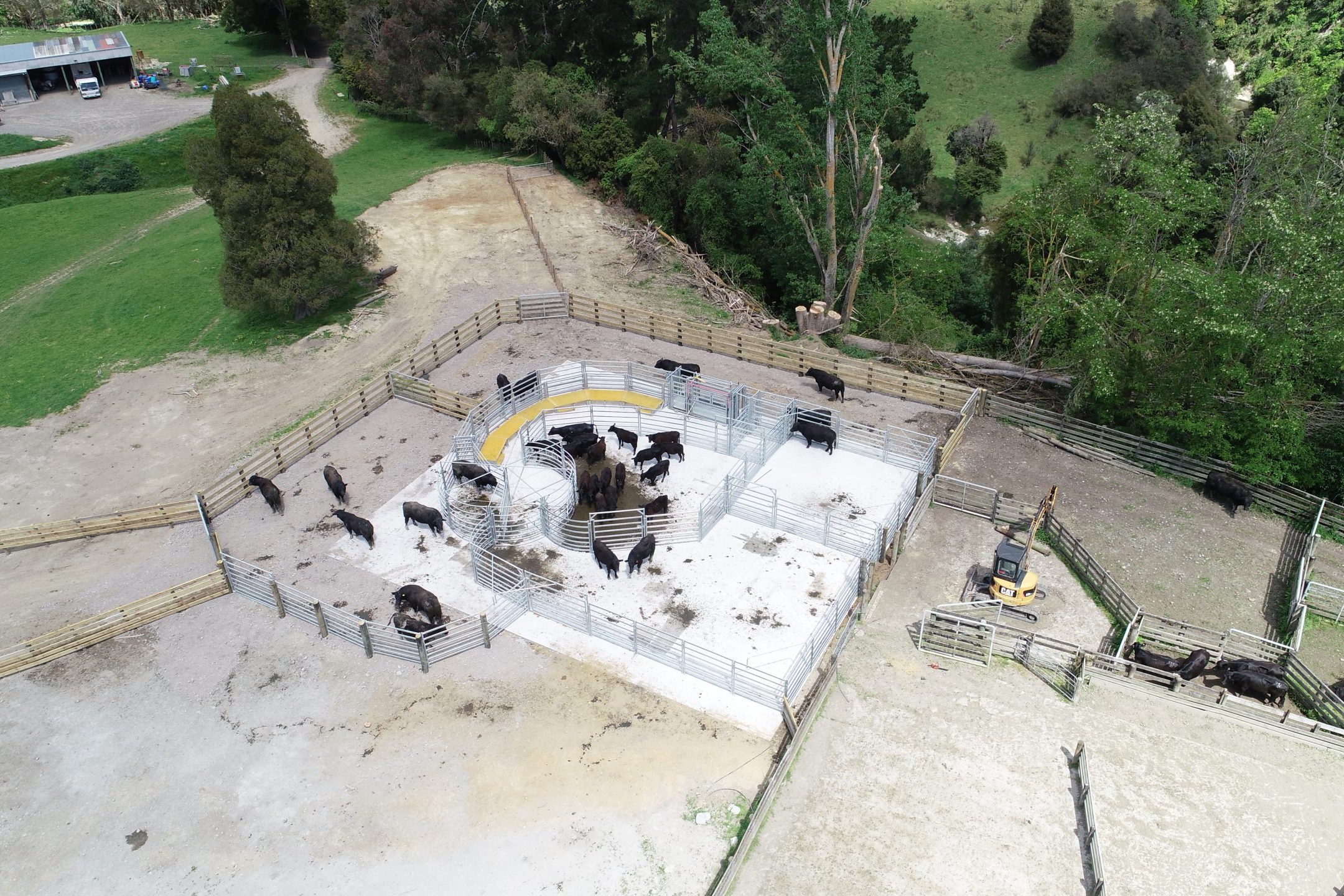Virtual fencing life changing for hill-country bulls
The winter of 2023 saw Hawke’s Bay farmers Matt and Gemma Barham’s energy and enthusiasm levels for farming waning as they shifted bulls on crop behind a white electric wire through a wet winter. Words Sarah Perriam-Lampp.
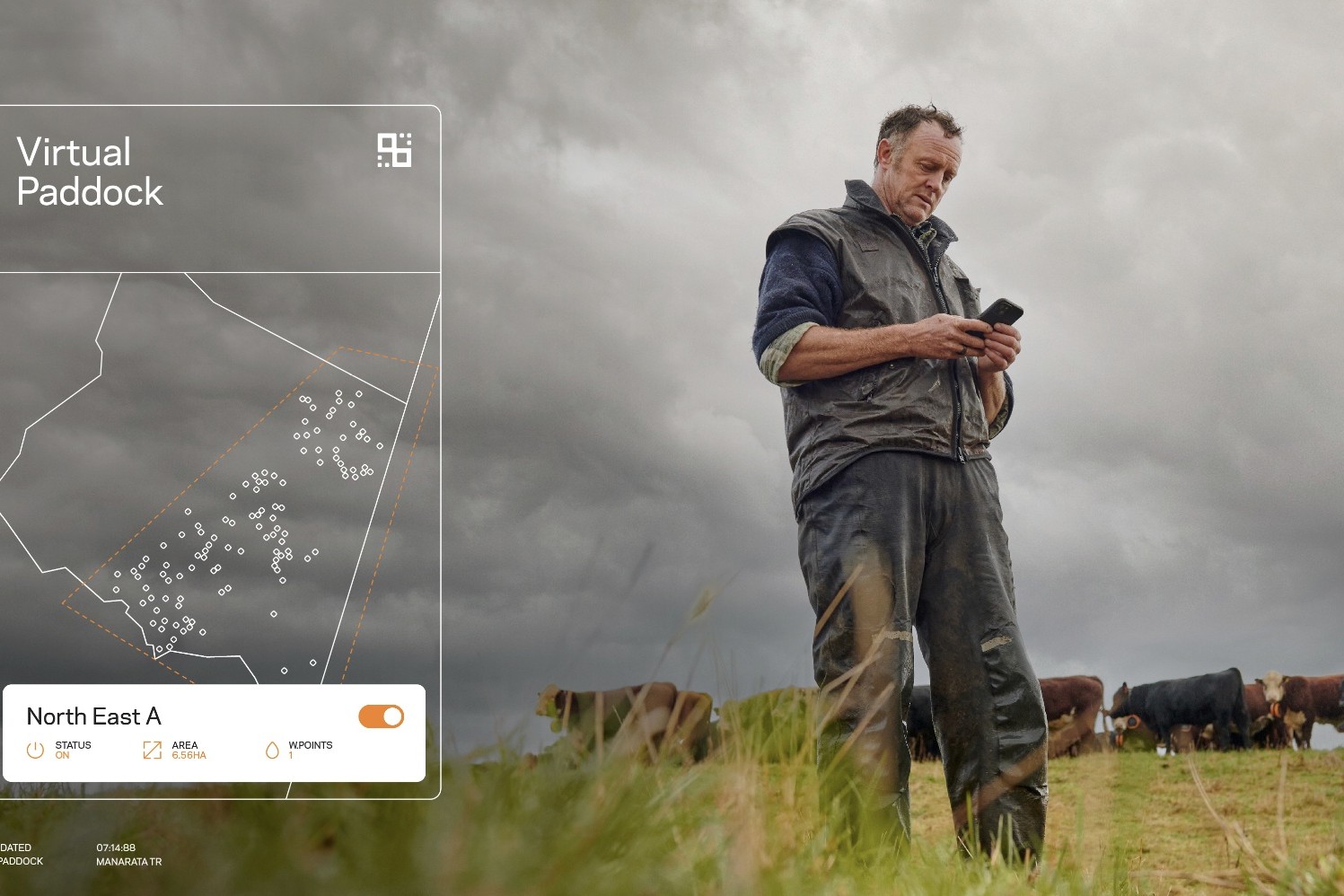
IN PARTNERSHIP WITH GALLAGHER
The dread of another day of this practice led the couple farming at the historic Waipukurau Farm, Mangatarata Station, to go searching for a better way.
The 1,020ha property 7km from Waipukurau in Central Hawke’s Bay winters 1,600 cattle in total, 400 with neckbands and increasing, ranging in ages and breed as service bulls for the dairy industry. They found the reception from Sarah Adams from Gallagher Animal Management supportive of the mission they were on to use virtual fencing technology on a trial of 100 bulls with Gallagher’s eShepherd technology.
“We ordered 100 collars to see how it would go in February 2024,” explains Matt. “Within a week we ordered another 300 as we could see straight away how quickly the bulls learnt to stay behind the line and the benefit it was going to have for me and Gemma in the winter ahead.”

eShepherd is a solar-powered, GPS-enabled livestock neckband that enables you to simply draw your virtual fence anywhere on your property and your cattle learn to move with and remain within the virtual barrier.
A recent trip to the East Coast Farming Expo, where Matt was on a panel of farmers explaining their hill-country experience with virtual fencing, drew many questions from the intrigued farming crowd.
“The common questions we get are, ‘Does it actually work?’ I can understand the fascination, but it would have been very similar to the eighties when Gallagher brought out the electric fence vs the traditional No. 8 wire fence,” says Matt.
He explains that the reputation of bulls for fighting and breaking fences as well as the thickness of their necks made farmers question him even more.
“We have 550–650kg Angus bulls wearing them without getting out. But it’s also the fact that we are putting collars on them as R3s, not trained younger. We did that with a mob of R3 Hereford bulls that were 550–680kg and they adapted quickly; it blew me away.”
I have learnt how smart cattle really are. – Matt Barham, Mangatarata Station
Matt has seen an improvement in the bulls’ temperament since wearing the collars.
eShepherd was designed and built for beef cattle with the ability to handle cattle with hairy coats in winter conditions. The collars use a combination of audio stimulus and mild electric pulse to train the animals.
Matt explains that the key is to be solid with the training of the bulls when you first put them on. He puts them in a long laneway split across the shortest distance so they are only exposed initially to one virtual fence. He says a few will get out from time to time and you just have to have someone putting them back.
“Of the last four mobs I’ve trained in the last three weeks, one bull got out. They already respect power because they have been behind a wire so they pick it up quickly. I’ve been amazed to watch how smart cattle are.” He shares a story about watching one bull who dropped his collar but continued to live vicariously with the other bulls without it and would move away from the line simply because of the sound from the collar on the bull next to him.
Pasture utilisation is the key driver for Matt and Gemma. They graze the bulls on kale and oats in the winter as well as balage.
“It’s life-changing stuff. You can have all the gates open in winter for feeding out with the tractor!”
Matt anecdotally estimates they utilised an extra 4t/DM of the kale this season with virtual fencing due to better utilisation with the way the cattle graze differently than with an electric fence.
“You’re teaching cattle bad habits when you lower the break with a white wire. They run over the line and tramp on it first … You don’t get that with the virtual fence line. When you move the line on your virtual map they eat forward and don’t trample it.”
He’s noticed that also late summer/good early autumn, they are able to get the cattle to fully utilise the feed, adding in balage before moving them, assisting with conserving feed in drought conditions in Hawke’s Bay.
The eShepherd collars are easily adjustable and safe to lengthen as the animal grows with the growth of the neck.
The Barhams are trialling eShepherd on 220-250kg bull calves leading into this winter and have planned that every time they need to be brought into the yards for animal health tasks like drenching, they are in adjusting the collars for size.
The couple put eShepherd to the ultimate test in 2024 when they went to Barcelona for the America’s Cup with a 12-hour time zone difference, remotely watching their cattle from their laptop.
“We had staff at home carrying out day-to-day checks and observations of the collared mobs. They were carrying out the virtual shifts and then if there were any issues with the bulls, I had the ability to change things if needed.”
The farm has about 85% cellphone coverage, allowing the Barhams to run the eShepherd system fully from this connectivity which meant a reduction in the infrastructure cost. eShepherd also runs without cell coverage with the install of base stations and points across the farm that provide connectivity.
Visit am.gallagher.com

